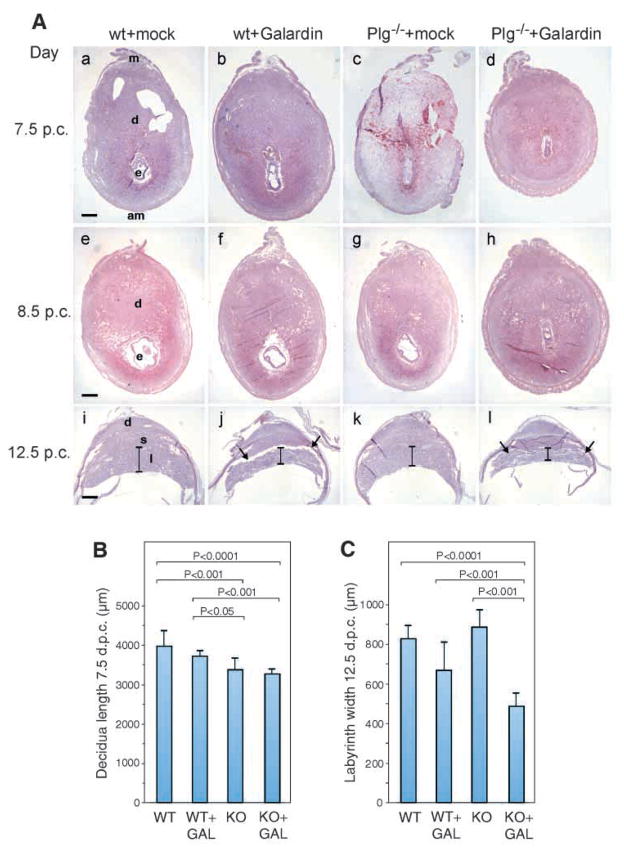Fig. 2.
Effect of galardin treatment on 7.5 and 8.5 dpc implantation sites and 12.5 dpc placenta from wild-type and Plg-deficient mice. (A) Hematoxylin and Eosin stained sections of 7.5 and 8.5 dpc implantation sites and 12.5 dpc placentas from mock-treated wild-type mice (parts a,e,i), galardin-treated wild-type mice (parts b,f,j), mock-treated Plg-deficient mice (parts c,g,k) and galardin-treated Plg-deficient mice (parts d,h,l). Typical implantation sites from mock-treated wild-type mice and most of the galardin-treated wild-type and Plg-deficient mice had an elongated egg shape (parts a–c), whereas 60% of the implantation sites from the galardin-treated Plg-deficient mice were round (part d) (as they were in 33% of the mock-treated Plg-deficient mice and the galardin-treated wild-type mice). At 8.5 dpc, 50% of the embryos from galardin-treated Plg-deficient mice were runted and at a developmental stage resembling 7.5 dpc embryo from mock-treated wild-type mice (part h). Sections of 12.5 dpc placentas from Plg-deficient and wild-type mice treated with galardin revealed that the tissue was loosely associated and the decidua and spongiotrophoblast layers separated upon collection (arrows in parts j,l). Placentas from galardin-treated Plg-deficient mice had a less developed and thinner labyrinth layer than in mock- and galardin-treated wild-type and in Plg-deficient mice. Length of bars (in parts i–l) indicates the size of the labyrinth layer. (B) Histograms of the decidua length at 7.5 dpc±s.d. for each genotype.
(C). Histograms of the labyrinth width at 12.5 dpc± s.d. for each genotype. am, antimesometrial; d, decidua; e, embryo; ec, ectoplacental cone; l, labyrinth layer; m, mesometrial; s, spongiotrophoblast layer. Scale bar: 500 μm.

